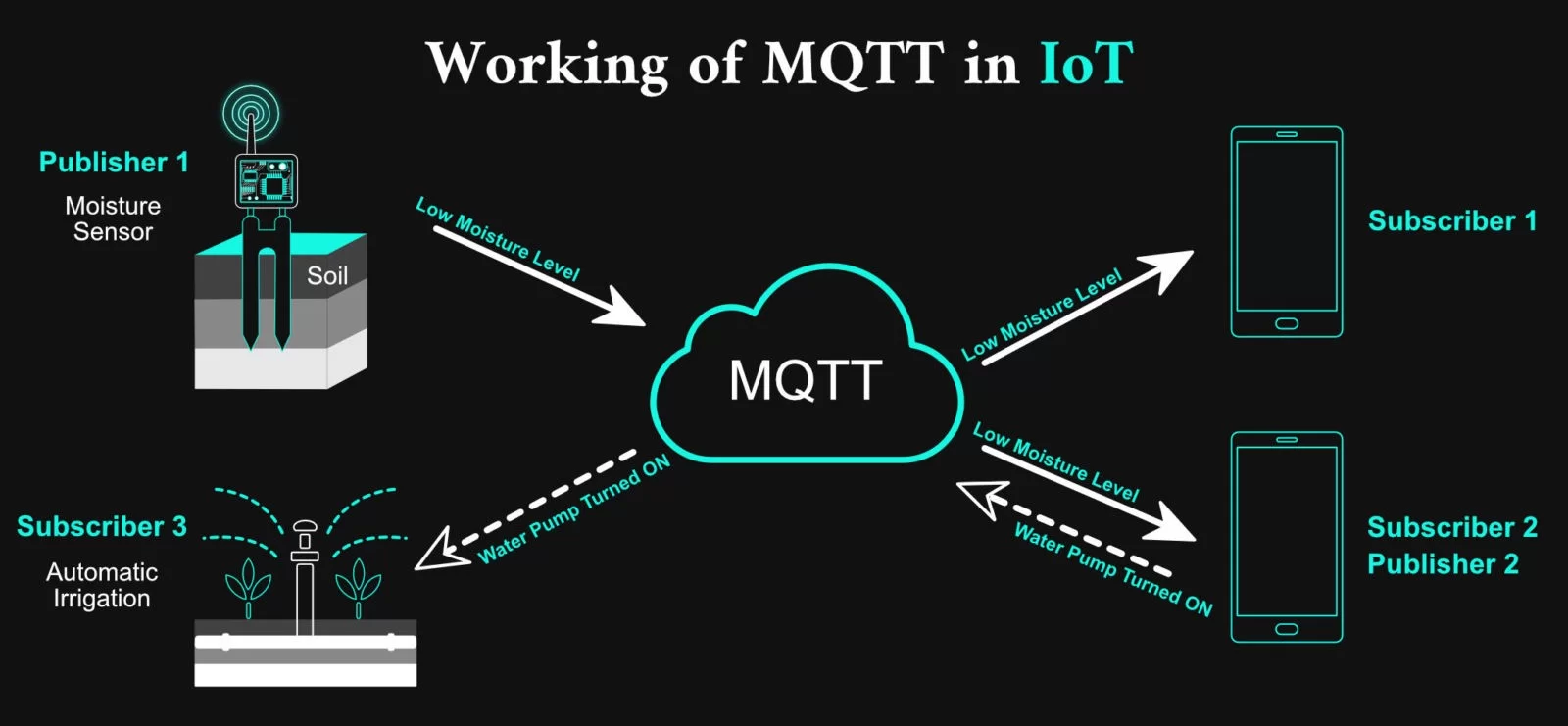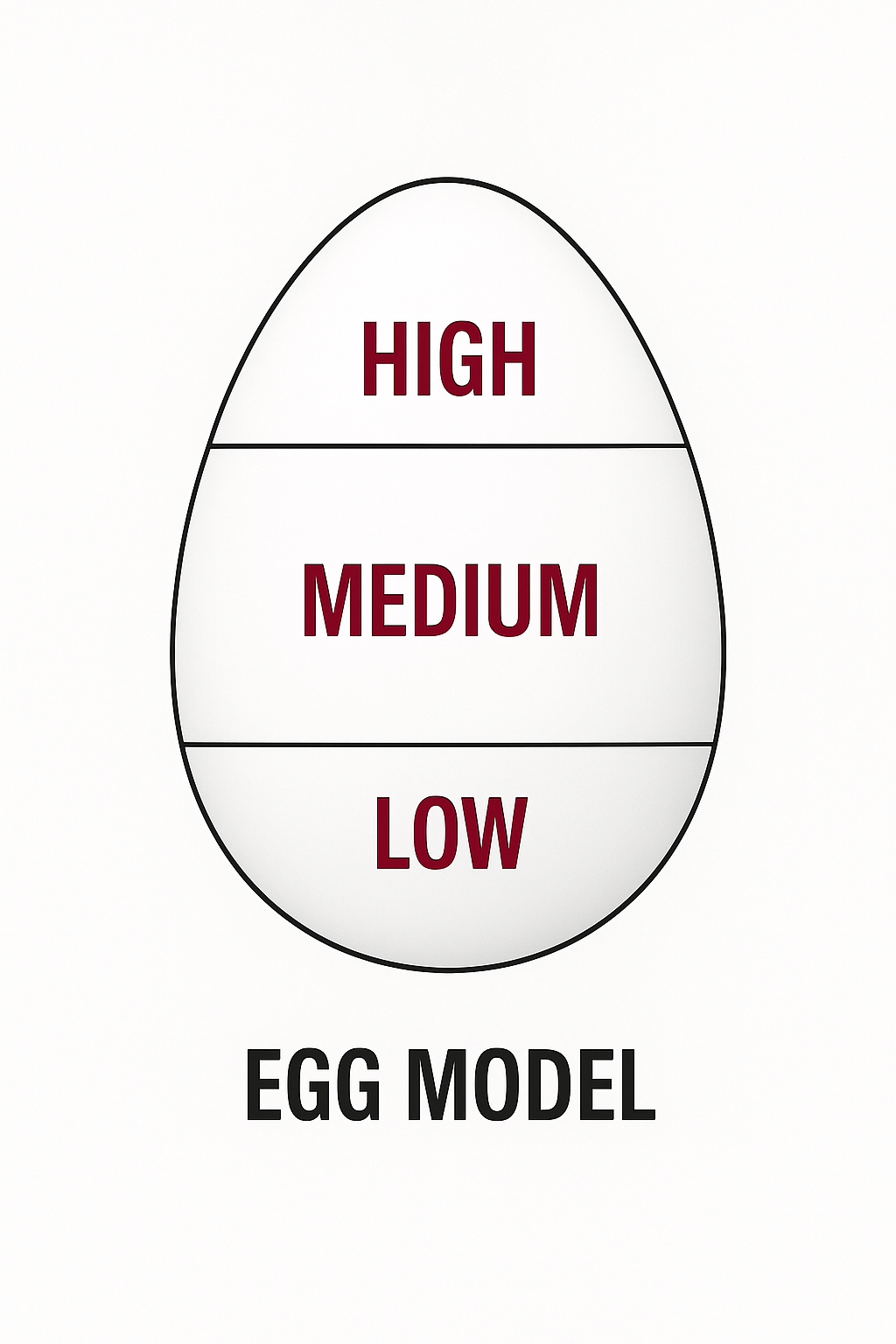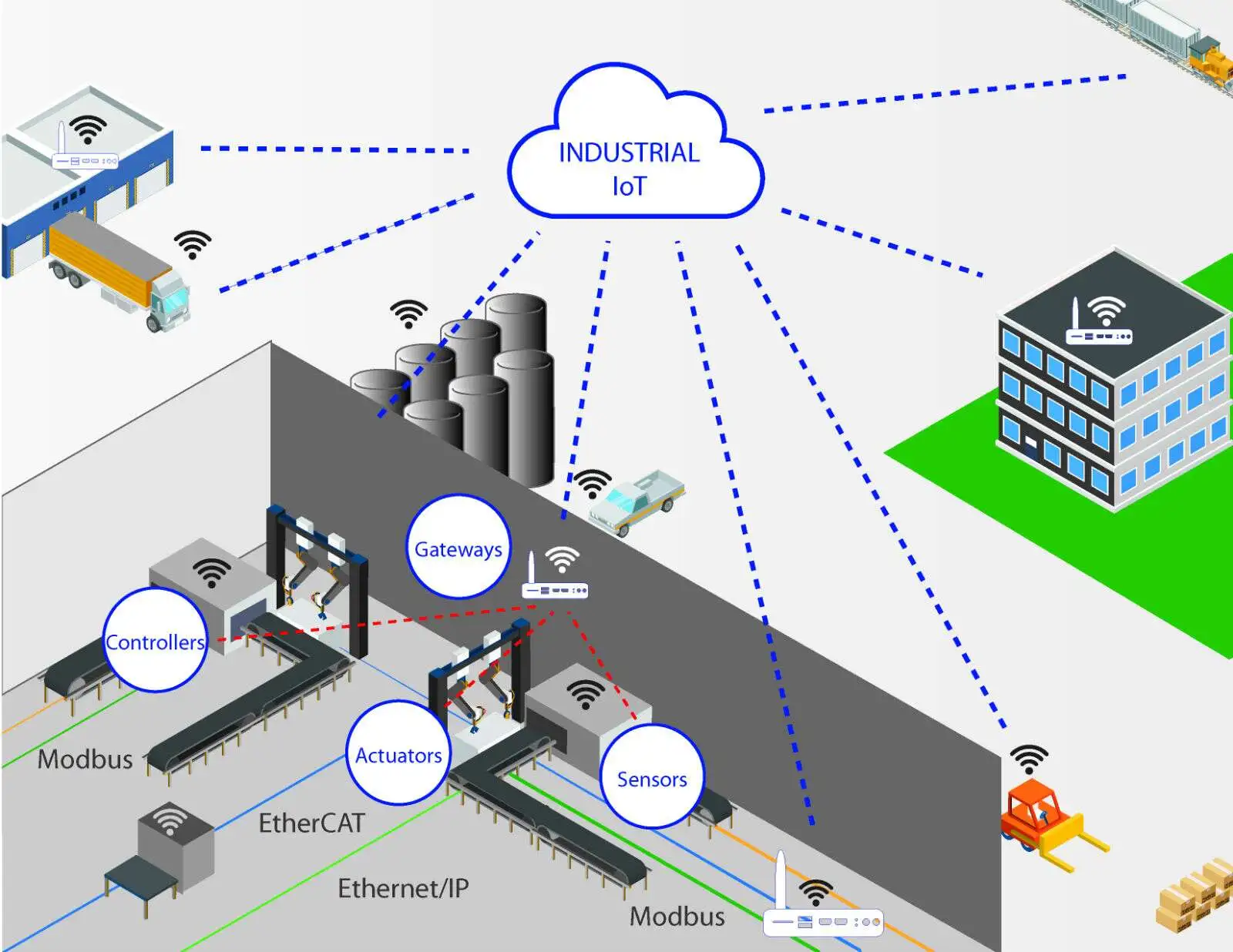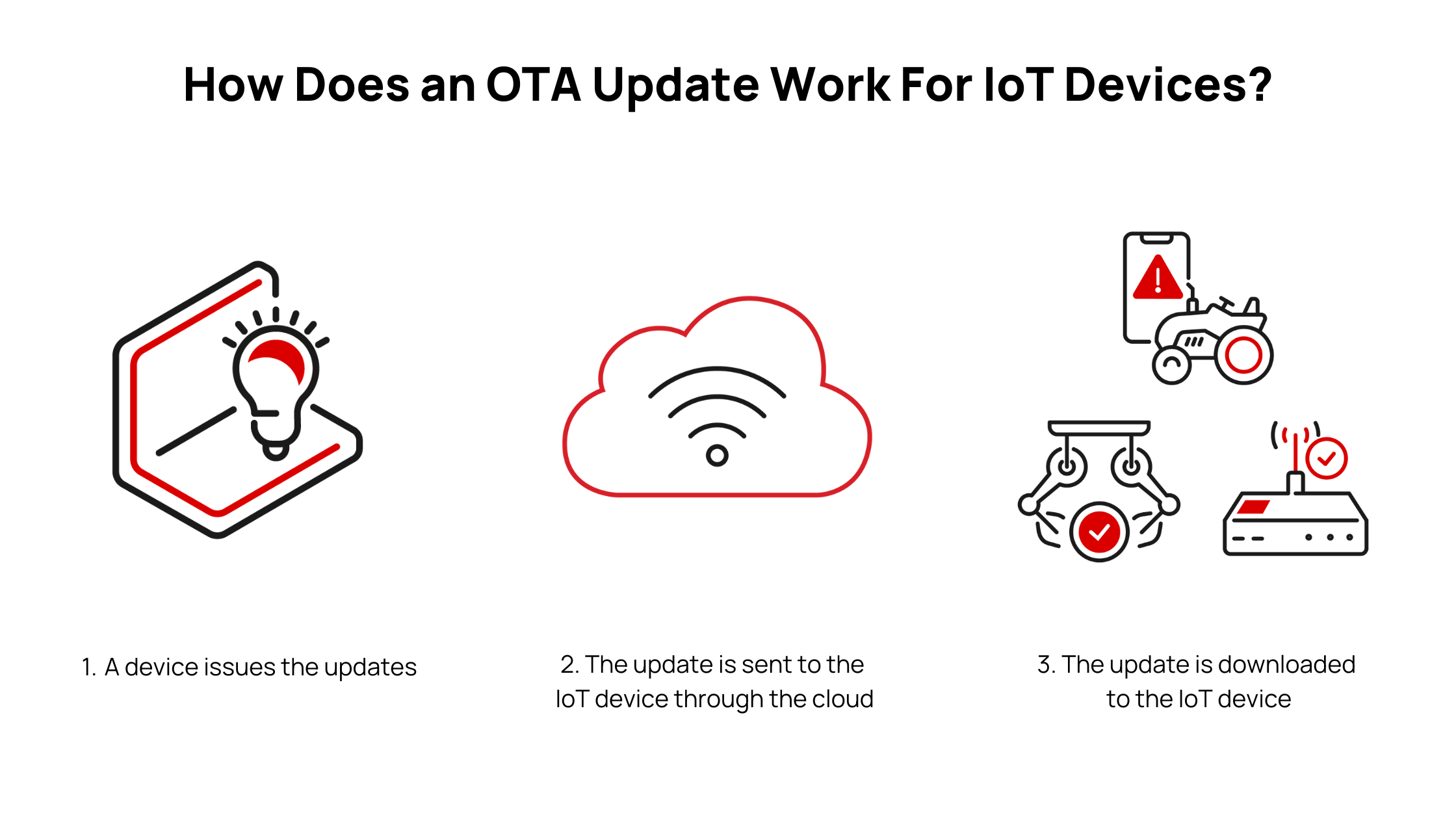Introduction
MQTT is a lightweight publish/subscribe messaging protocol for IoT that connects devices in a scalable, reliable, and efficient way. Since IBM released MQTT in 1999 and open-source MQTT servers such as EMQX became available, MQTT adoption has grown steadily. As of 2023, with broader and more diverse IoT deployments, several key trends are emerging in the MQTT ecosystem.
MQTT over QUIC
QUIC (Quick UDP Internet Connections) is a transport protocol developed by Google that runs over UDP. It reduces connection-establishment latency, improves data transfer performance, and addresses some limitations of TCP. HTTP/3 uses QUIC as the transport layer, delivering lower latency and better loading experiences than HTTP/2.
MQTT over QUIC is one of the most notable innovations in the MQTT space since MQTT 5.0. With features such as multiplexing, faster connection establishment, and connection migration, it has the potential to become a next-generation MQTT transport standard.
MQTT 5.0 currently defines TCP, TLS, and WebSocket transports. In production deployments, MQTT over TLS/SSL is widely used to secure client-to-broker communication. However, it requires multiple round trips to establish a connection (about 3.5 RTTs for TCP and TLS handshakes), which increases latency.
Compared with MQTT over TLS/SSL, MQTT over QUIC offers faster and lower-latency connection setup, typically 1 RTT for initial connection and the ability to use 0-RTT for faster reconnects. The QUIC stack can be tuned for specific use cases, such as unstable networks or scenarios requiring lower client-to-server latency. It is especially relevant for automotive IoT on mobile networks and industrial IoT (IIoT) scenarios that require extremely low latency.
Serverless MQTT
The rise of serverless computing has changed how applications are designed, developed, deployed, and run. In a serverless model, developers focus on application logic without managing infrastructure, improving agility, scalability, and cost efficiency. Serverless MQTT architectures are an emerging innovation for 2023.
Traditional MQTT deployments may take minutes or hours to provision in cloud or private environments. Serverless MQTT enables rapid provisioning of MQTT services with minimal steps. Beyond deployment speed, serverless MQTT offers seamless resource scaling based on demand and usage-based billing models that align with this elasticity. This model can lower operating costs and broaden MQTT adoption across industries.
MQTT Multi-Tenant Architectures
Multi-tenant architecture is a foundation for serverless MQTT services. Devices from different users or tenants can connect to the same large-scale MQTT cluster while keeping data and business logic isolated. Multi-tenancy is common in SaaS applications and is typically implemented in two ways:
- Tenant isolation: providing each tenant with a separate application instance running on dedicated servers or virtual machines.
- Database isolation: multiple tenants share an application instance but have separate database schemas to ensure data separation.
In an MQTT broker multi-tenant design, each tenant and its devices have isolated namespaces, including unique topic prefixes and access control lists (ACLs) that define publish/subscribe permissions. Multi-tenant MQTT reduces administrative overhead and supports complex or large-scale IoT deployments. For example, departments or applications within a large organization can act as separate tenants using the same MQTT cluster.
MQTT Sparkplug 3.0
MQTT Sparkplug is an open specification designed by the Eclipse Foundation to standardize industrial device data access via MQTT. Sparkplug 3.0, released in November 2022, defines a unified data interface for sensors, actuators, programmable logic controllers (PLCs), and gateways. Key improvements in Sparkplug 3.0 include:
- MQTT 5.0 support: Adds compatibility with MQTT 5.0 features such as shared subscriptions, message expiry, and flow control.
- Optimized data transmission: Uses more compact data encoding and compression algorithms.
- Extended data model: Introduces an expanded data model that supports richer device information, configuration data, and device metadata.
- Improved security: Includes enhancements such as mutual TLS authentication and refined access control mechanisms.
- Simplified device management: Supports automatic device registration and discovery, simplified configuration, and better diagnostics.
Sparkplug aims to simplify connectivity and communication among industrial devices, enabling efficient data collection, processing, and analysis. Sparkplug 3.0 is expected to see broader adoption in industrial IoT environments.
Unified Namespace for MQTT
A unified namespace is an architecture built on an MQTT broker for industrial IoT and Industry 4.0. It provides a single naming scheme for MQTT topics and a centralized repository for messages and structured data. A central MQTT broker connects devices, sensors, and applications such as SCADA, MES, and ERP in a star topology, enabling an event-driven architecture that simplifies application development.
Traditional industrial systems often separate OT and IT layers, with distinct data, protocols, and tools. Adopting a unified namespace allows OT and IT systems to exchange data more effectively, helping converge OT and IT systems in the IoT era.
Open-source MQTT servers like EMQX or lightweight servers like NanoMQ, combined with industrial protocol gateway software such as Neuron, can be used to build unified namespace architectures using state-of-the-art IT technologies.
MQTT Geo-Distribution
MQTT geo-distribution allows MQTT brokers deployed across different regions or clouds to function as a single logical cluster. This enables automatic synchronization and transfer of MQTT messages between geographically distributed brokers. Two primary approaches are:
- Single cluster, multiple regions: A single MQTT cluster with nodes running in different regions.
- Multiple clusters, multi-cloud: Multiple MQTT clusters deployed across different clouds that are interconnected.
Combining these approaches enables a reliable, cross-region IoT data infrastructure. Geo-distributed MQTT allows organizations to create a global, multi-cloud MQTT access network so devices and applications can connect to the nearest node regardless of physical location.
MQTT Streams
MQTT Streams is an anticipated extension that enables real-time stream processing of high-volume, high-frequency data within an MQTT broker. This capability enhances traditional publish/subscribe brokers by allowing clients to produce and consume MQTT messages as streams, supporting features such as historical message replay.
Stream processing is crucial to extract business value from the large volumes of data generated by IoT devices in real time. Historically, this required integrating MQTT brokers with separate big data stacks like Kafka, Hadoop, Flink, or Spark. Built-in stream processing simplifies IoT data architectures, improves processing efficiency and latency, and provides a unified platform for messaging and stream processing.
With features like message deduplication, replay, and expiry, MQTT Streams can deliver high throughput, low latency, and fault tolerance, making it a powerful tool for real-time stream processing in MQTT-based IoT applications.
Conclusion
These seven trends reflect ongoing advances in emerging technologies and their role in driving IoT development. As a messaging standard that has evolved for over two decades, MQTT continues to increase in importance. With wider IoT adoption across industries, MQTT is evolving to meet requirements for lower-latency connections, simpler service deployment, flexible management for complex or large-scale deployments, and robust industrial device integration. MQTT will continue to play a key role in IIoT and IoV deployments in 2023 and beyond.
 ALLPCB
ALLPCB








